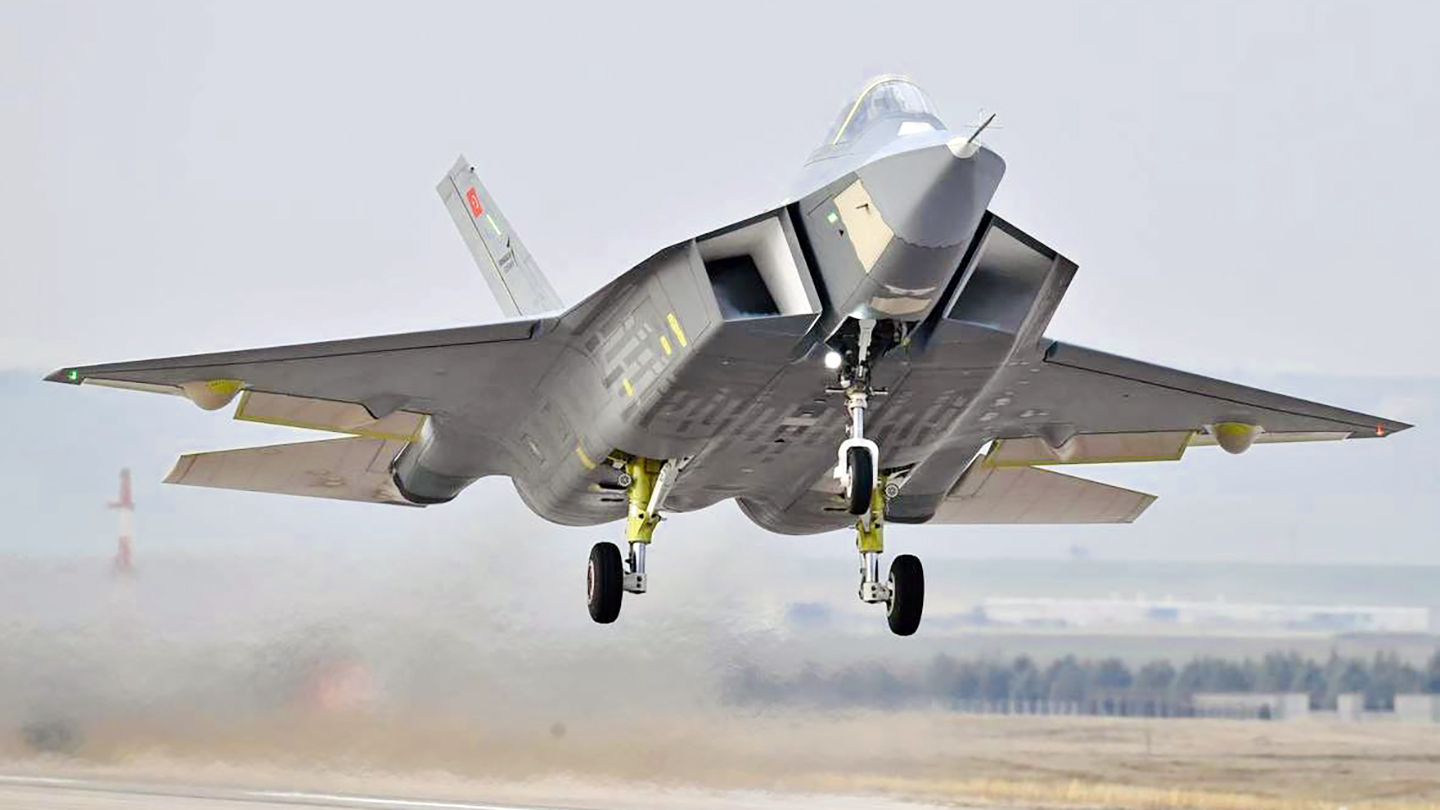Turkey’s next-generation fighter, previously known as the TF-X, and now as the TF Kaan, made its first flight today. While the prototype had been delayed getting into the air, based on the previously announced plans, it remains a highly significant milestone for Turkey’s burgeoning aerospace industry and one that was still achieved in a remarkably compressed timeline.
Turkish Aerospace Industries test pilot Barbaros Demirbaş was in the cockpit of the Kaan prototype when it made its maiden flight this morning. The new fighter was accompanied by a Turkish Air Force F-16D operating as the chase plane. According to initial reports, the Kaan was airborne for 13 minutes, reaching a height of 8,000 feet and a speed of 230 knots. It appears to have had its landing gear deployed throughout the flight — as is customary on first flights — and it deployed a brake chute when it touched down.
Initial imagery from the first flight shows the jet in a new manner. Its overall size and internal volume are more apparent. While the Kaan has the now-familiar mold lines of a fifth-generation fighter, optimized, at least to some degree, for low observability, it’s unknown exactly how stealthy the aircraft is.
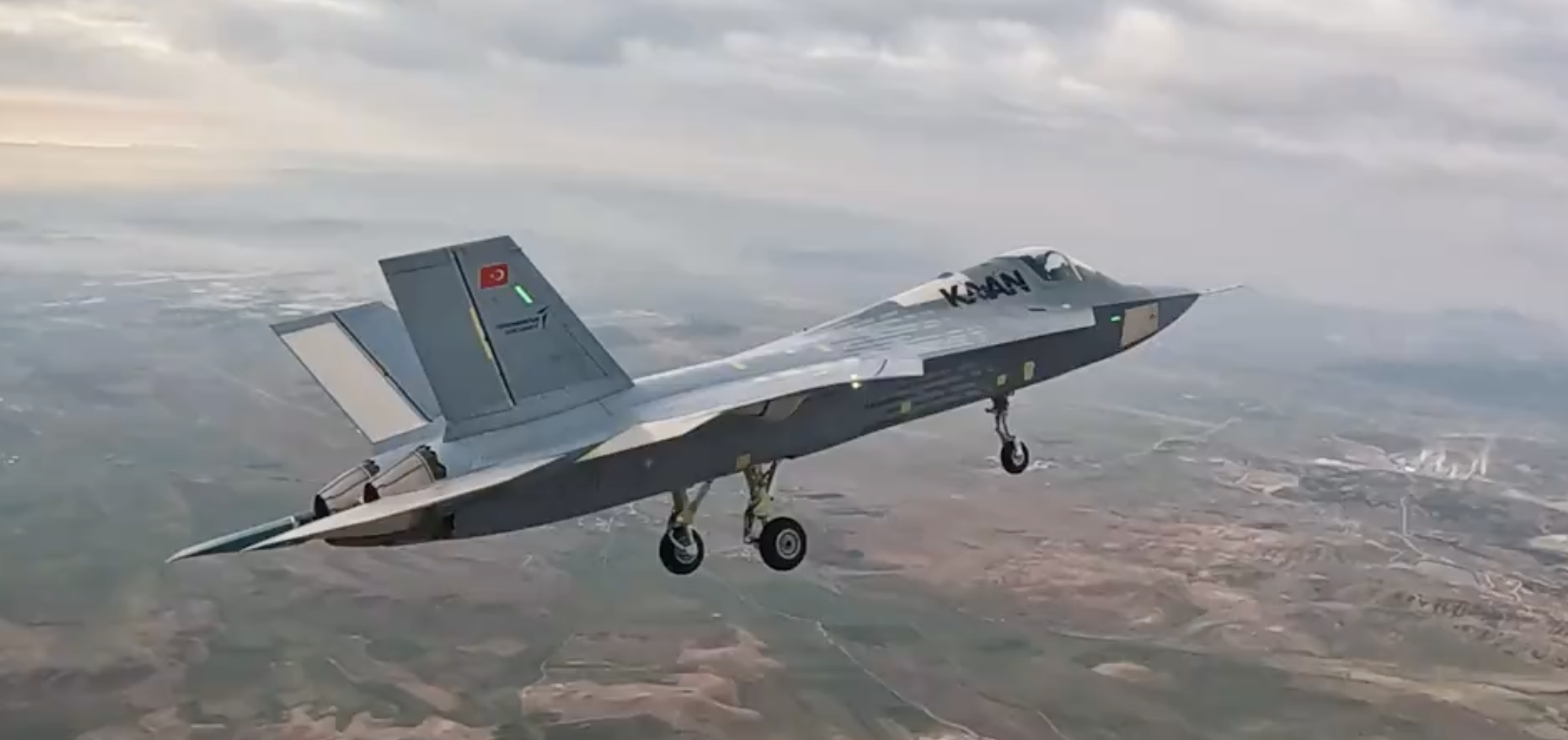
It’s also worth remembering that the stated goal of the project has been to develop an advanced fighter with a reduced radar signature, as well as a high level of performance and modern avionics and other systems. Much of this would seem to be achievable, bearing in mind Turkey’s level of experience in the field. On the other hand, the kinds of high-end sensors, and above all data fusion and interoperability that characterize fifth-generation fighters like the F-35 are likely beyond Turkey’s reach. As is the level of stealth found on its U.S. counterparts. Still, any significant reduction in radar return would be very welcome, especially from the critical frontal hemisphere.
From that frontal aspect, a cursory inspection does hint at a degree of low observability, but again this remains conjecture. For the test flight, the faceted enclosures for what appears to be a dedicated infrared search and track sensor system, or IRST, in front of the cockpit, and a multi-purpose electro-optical targeting system, or EOTS, underneath the forward fuselage, have both been removed. You can read more about the aircraft’s intriguing sensor setup here.

It’s also worth noting that, in its current form, the Kaan is powered by U.S.-supplied General Electric F110 turbofans with standard (non-stealthy) exhaust nozzles. The rear of the aircraft is also dominated by prominent tail booms on which the horizontal stabilizers are mounted, and which appear to offer yet more internal volume.
In January 2023, Temel Kotil, CEO of Turkish Aerospace Industries, said the jet could make its maiden flight that same year, although that schedule clearly slipped somewhat; by mid-2023, the first flight was being planned for December 27. Nevertheless, for an aircraft that was only rolled out in March last year, when still incomplete, getting it into the air in less than a year is very impressive.

The fighter now known as TF Kaan (the X for experimental having been dropped) was conceived under a program formally known as the Milli Muharip Uçak (MMU), or National Combat Aircraft, which began in 2010.
Since then, the plans for Turkey’s fighter fleet have seen considerable upheaval.
A full-scale mockup of the TF-X appeared for the first time at the Paris Air Show in 2019. This was soon after it became clear that Turkey would be kicked out of the F-35 Joint Strike Fighter program, in which it had been deeply involved, including at an industrial level, with plans to buy around 100 of the stealth fighters. Washington took that decision after Turkey refused to renege on plans to purchase Russian-made S-400 air defense systems.
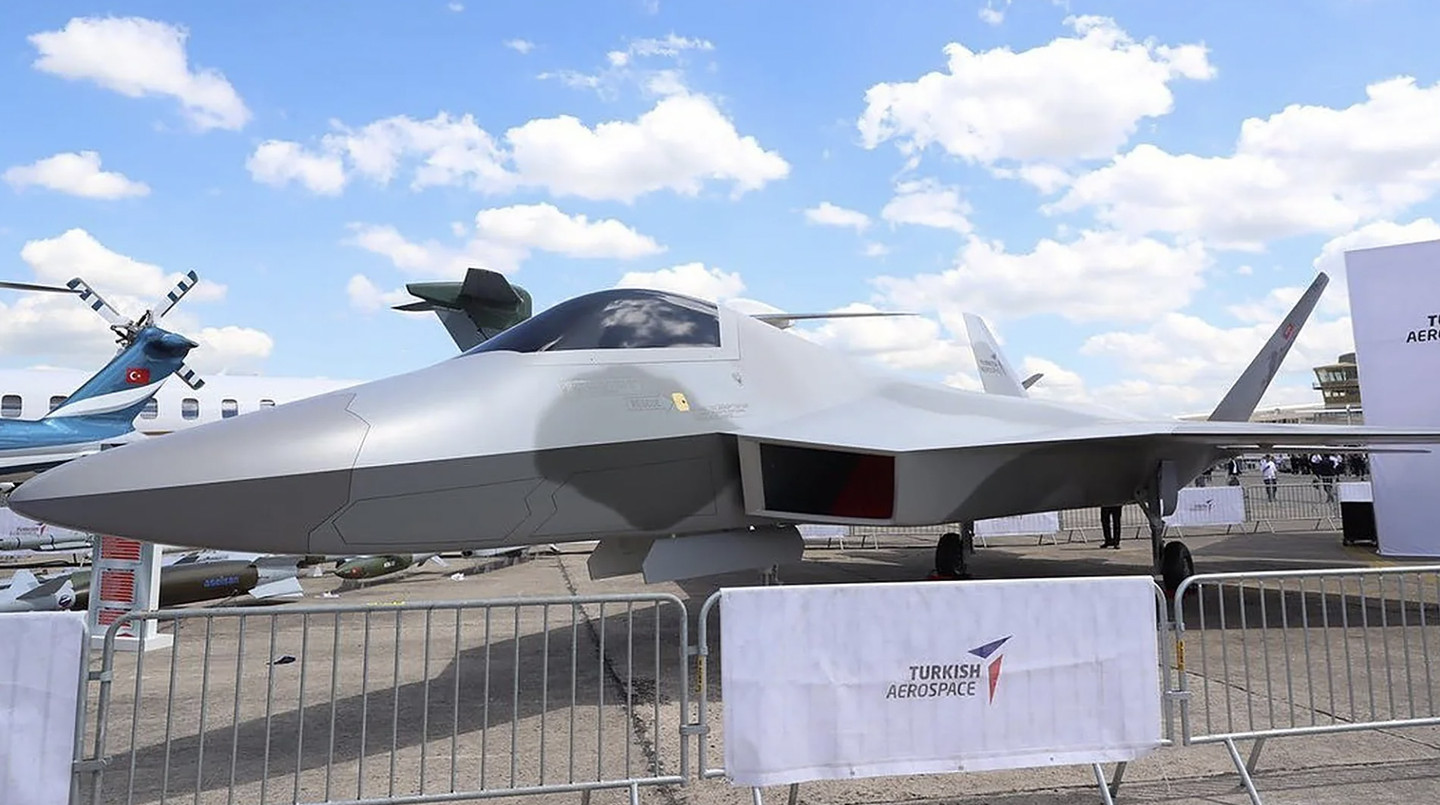
Ejection from the F-35 program was just one aspect of a broader breakdown in U.S.-Turkish relations, which also saw Ankara’s request to buy additional F-16 fighters turned down.
Turkish officials suggested in the past they might seek a non-U.S. alternative source of foreign-made fighters to help bolster their forces in the near term. Russia apparently offered the Su-57, while Turkey attempted to secure approval for the purchase of Typhoons from the Eurofighter consortium, a move that seems to have been blocked by Germany.

More recently, relations with Washington have improved, especially after Turkey finally approved Sweden’s entrance into NATO, with the Biden administration now seeking to push through sales of new F-16s and upgrade kits to Turkey. There have even been suggestions that the F-35 is potentially back on the table for Turkey.
With the need to replace aging F-4E-2020 Terminators, the country’s requirement for new fighters, whatever the origin, is clear.
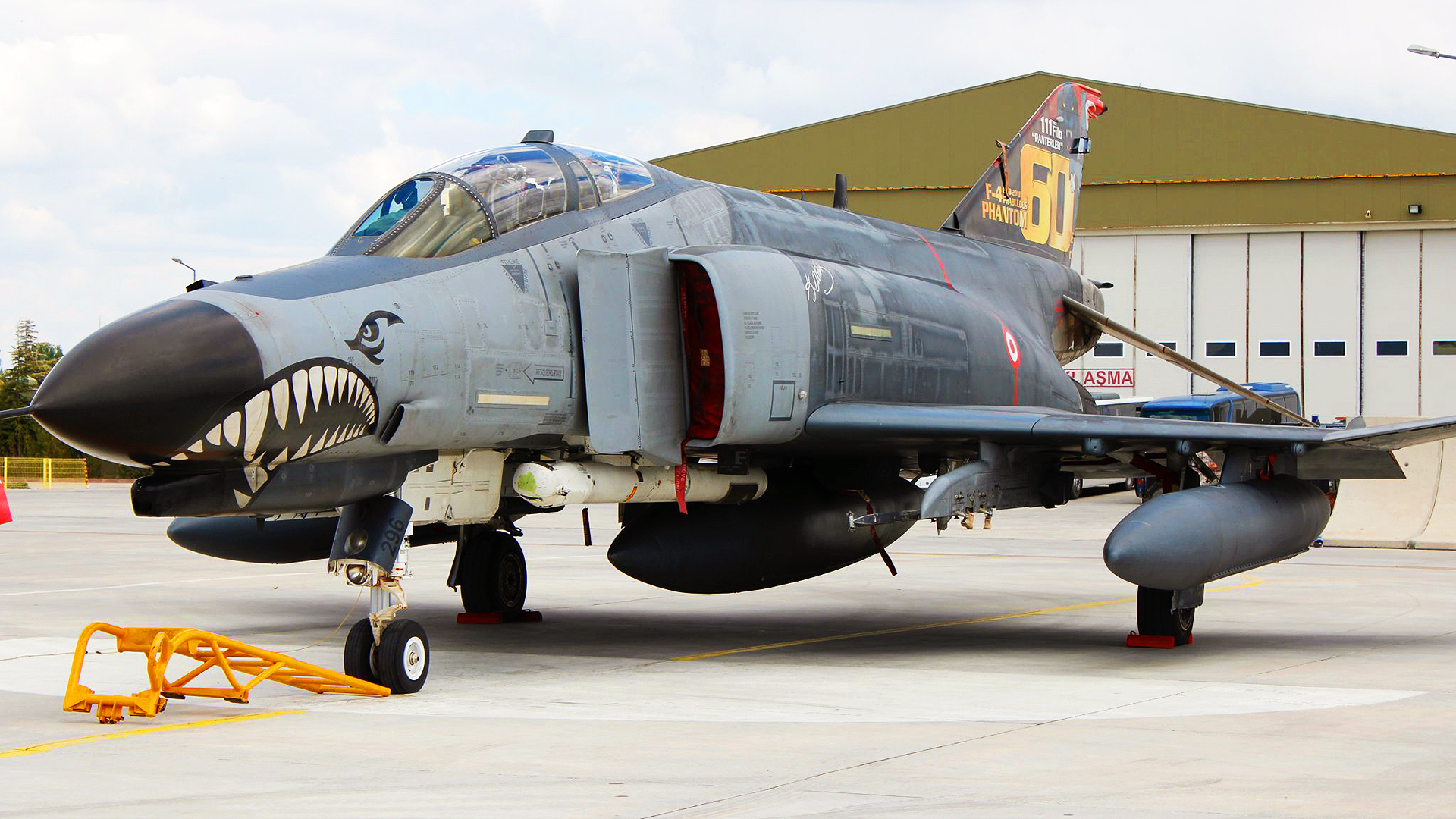
While the TF-X program has forged ahead despite this turmoil, there have been repeated questions about whether the United States will make available the F110 turbofans that power the prototype. F110s are assembled under license in Turkey by TUSAS Engine Industries (TEI) but are still governed by U.S. export restrictions. Turkish officials have expressed hope of ultimately switching to a domestically produced engine type for the new fighter, but it’s unclear how realistic this is, let alone how long it would take.

Other foreign engine options have been discussed, too, including a Russian powerplant or a possible engine partnership with Rolls-Royce in the United Kingdom. In terms of the British tie-in, an initial deal fell apart due to technology transfer and intellectual property rights issues, while a Russian option would seem to be out of the picture since Moscow’s full-scale invasion of Ukraine.
As well as weighing up its options for future crewed fighters, Turkey has been busily developing advanced combat drones, too.
Most notably, in-development drones include the ANKA-3, a low-observable flying wing unmanned combat air vehicle (UCAV), and the fighter-like Bayraktar Kizilelma. While one or both of these could potentially be used as an adjunct to the Kaan, there’s also the possibility that should they prove successful, Ankara may opt for larger fleets of drones at the expense of more costly crewed fighters.
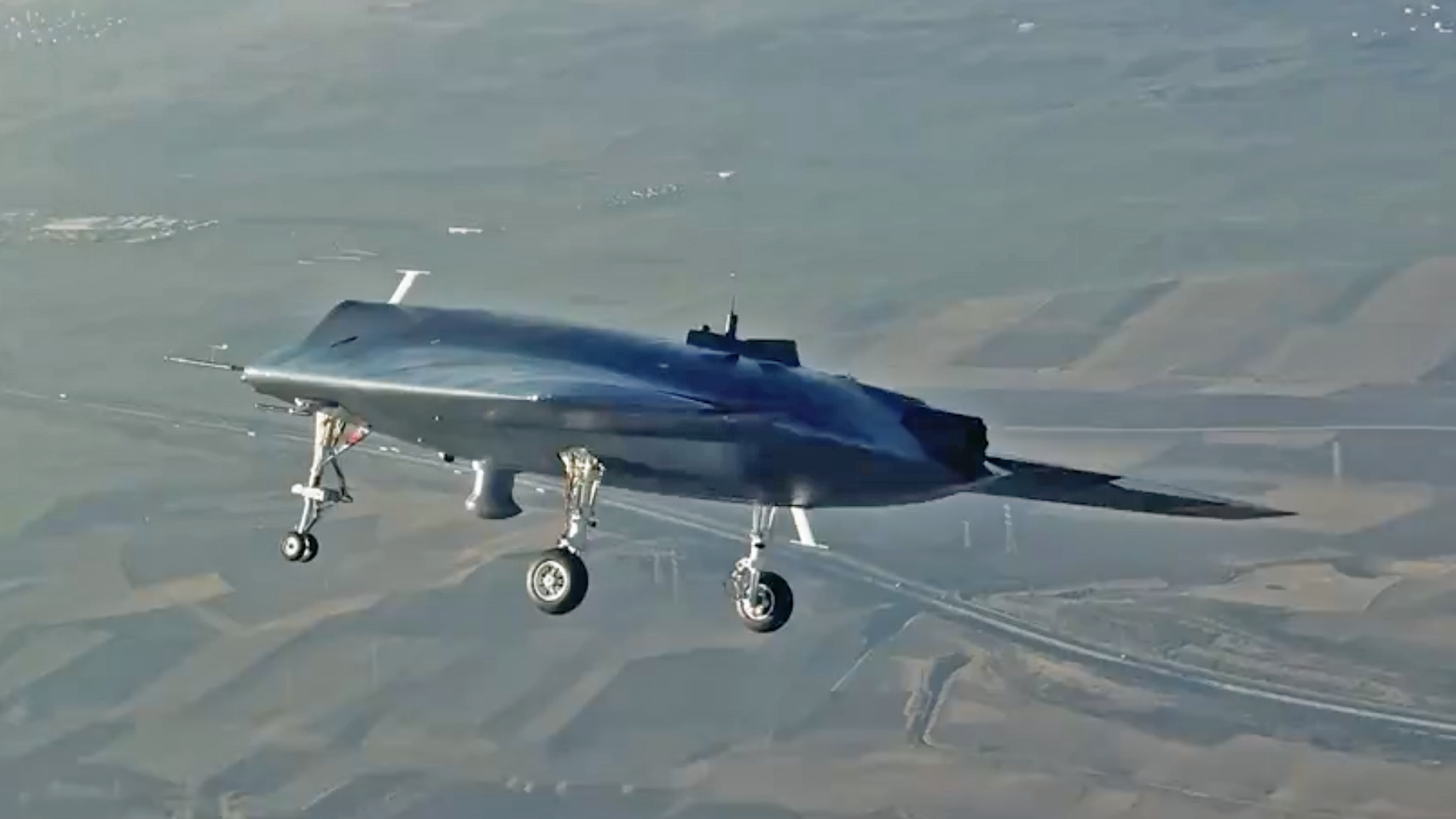

Meanwhile, Turkish officials remain optimistic about the Kaan, which is not only now the flagship of the country’s military aerospace output but also a point of pride for the nation as a whole.
Indeed, there is now even discussion about the crewed fighter that will come after the Kaan. There have been recent reports that Turkey is now working on a sixth-generation fighter, one that is planned to harness the advantages offered by artificial intelligence (AI).
As we have stated in the past, pursuing a sixth-generation fighter seems like a tremendous reach at this point, with so much focus and investment already being absorbed by the Kaan.

The potential for export is also a factor. Kaan joins a growing contingent of medium-weight fighters that feature low-observable characteristics and advanced avionics. These include China’s FC-31 and South Korea’s KF-21. These aircraft are being eyed as possible disruptors on the international fighter market scene. As for Turkey’s ambitions to export its prized fighter creation, they are not clear at this time.
While getting the new fighter into the air is clearly a very big deal for Turkey, much more testing and likely hurdles lie ahead. There is still a long way to go before the Kaan becomes a success, let alone meets the target of service entry around the 2030 timeframe.
Reportedly, Turkey plans to complete three pre-production prototypes, to be followed by 250 series-production aircraft, incorporating various refinements.
Now that the Kaan has begun flight testing, however, we should start to learn more about its performance and capabilities, as well as how it will fit into the future Turkish Air Force structure.
Contact the author: thomas@thewarzone.com
